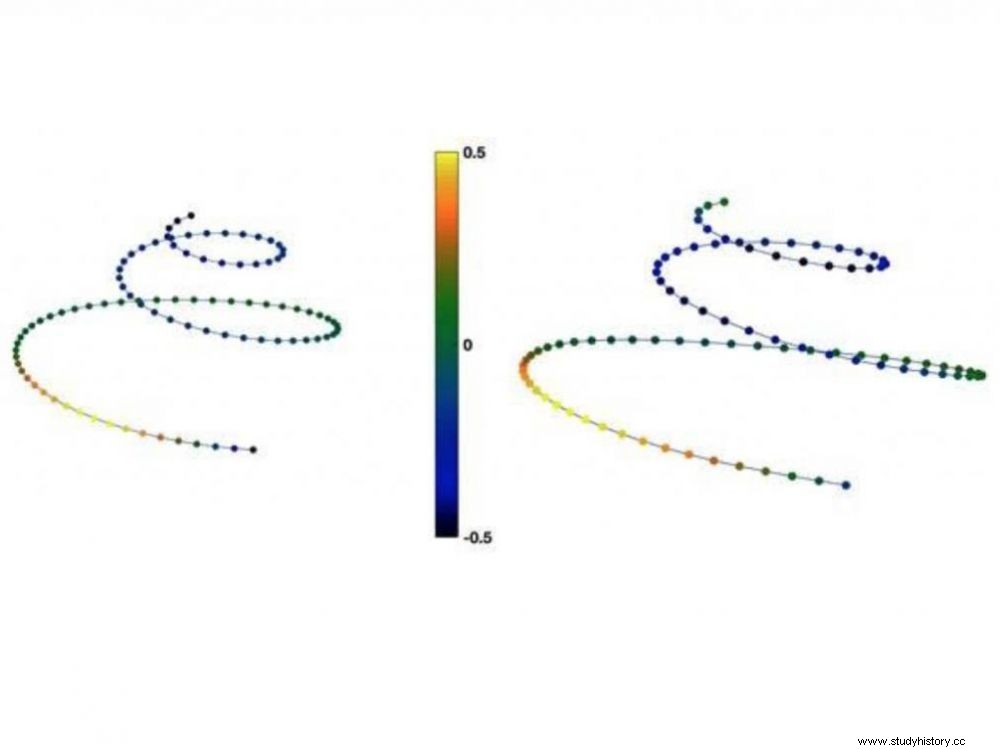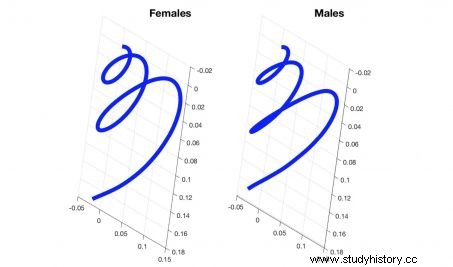French researchers have found that women and men have a different cochlea. A discovery that will have an impact in archeology but also in forensic medicine.

The colored dots illustrate the difference in torsion between a woman's cochlea (left) and a man's cochlea (right).
In both men and women, the cochlea, a small bone located in the ear, is shaped like a spiral. But French researchers have discovered that the twist of this spiral is not the same depending on gender. "The cochlea is located in the rock, a very dense and very resistant bone of the skull, which is often found on archaeological sites. It is a part of the skeleton that is often well preserved ", explains the paleo-anthropologist José Braga, one of the authors of the study published in the specialized journal Nature and professor at the University of Toulouse 3 Paul Sabatier. "We noticed that the rocks often differed between the male and female skeletons. This is how we came to work on the cochlea ."
A different twist
By combining mathematical models, computer science and artificial intelligence, scientists have been able to model the geometry of the cochlea, new methods which make it possible to be much more precise than before. Micro-scanners thus make it possible to see the bone in section, with much finer slices than those produced by a conventional scanner. "We no longer take a tape measure that we apply to the images of a scanner. Today, shape analysis is done in 3D ."

Women's (left) and men's (right) cochleas are the same size but have a different twist. Photo credit:Nature
These analyzes were able to show a difference in torsion in certain places between the two types of cochlea, which, moreover, have the same size regardless of gender. "We already knew that men and women do not have the same hearing performance. Women are more sensitive to high frequencies ." A possible influence of the cochlea, whose job is to transform the vibrations picked up by the ear into a nerve message to the brain.
Better identify skeletons
Thanks to this discovery, scientists now have a new method to identify the sex of a skeleton when DNA analysis proves impossible. An advance that should be used in archeology to identify the remains found during excavations but also in forensic medicine. "The skeletons of children have no sex differences. Differences in the shape of the pelvis are observed only after adolescence. Now it will be possible to examine the shape of the cochlea ", explains José Braga. It remains to understand the processes, which, in the evolution of Man, have led to a differentiation of this particular bone according to gender.
